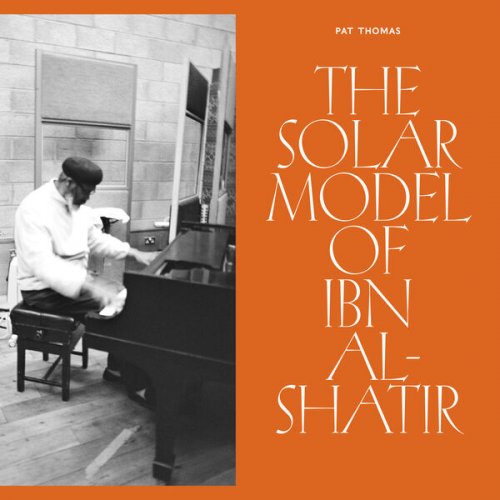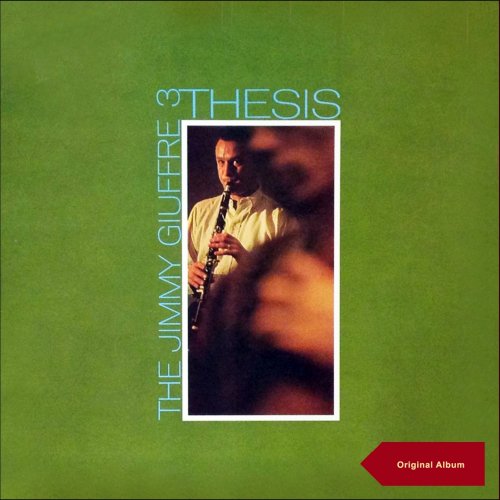Pat Thomas - The Solar Model of Ibn Al-Shatir (2024) [Hi-Res]

Artist: Pat Thomas
Title: The Solar Model of Ibn Al-Shatir
Year Of Release: 2024
Label: OTOROKU
Genre: Jazz
Quality: Mp3 320 kbps / FLAC (tracks) / 24bit-96kHz FLAC (tracks)
Total Time: 39:49
Total Size: 92.9 / 123 / 649 MB
WebSite: Album Preview
Tracklist:Title: The Solar Model of Ibn Al-Shatir
Year Of Release: 2024
Label: OTOROKU
Genre: Jazz
Quality: Mp3 320 kbps / FLAC (tracks) / 24bit-96kHz FLAC (tracks)
Total Time: 39:49
Total Size: 92.9 / 123 / 649 MB
WebSite: Album Preview
1. The Solar Model (13:51)
2. The Laws of Motion (3:28)
3. For George Saliba (3:43)
4. The Oud of Ziryab (4:46)
5. For Ibn Al-Nafis (4:18)
6. For Mansa Musa (3:44)
7. The Birds are Singing (6:01)
Pat Thomas returns to OTOROKU for his fourth collection of solo piano improvisations, this time recorded in a studio setting at London’s Fish Factory.
For 25 years now, beginning with Nur (Emanem) and continuing through Al-Khwarizmi Variations (Fataka), The Elephant Clock of Al-Jazari (OTOROKU), and now The Solar Model of Ibn Al-Shatir, Pat Thomas has drawn on the Arabic world for titles for his solo piano work - specifically the long-standing Islamic tradition of astronomical invention. For Thomas, the work of the polymaths he dedicates his music to has been sidelined by Eurocentrism, just as the Arabic origin of “jass” and the scalar, intervallic and polyphonic contributions made by Arab musicians have been routinely overlooked. Islamic innovation is at the heart of Thomas’ solo projects and draws a direct link between his Sufi faith and a totally unique style of playing. Each of his solo piano records is a dedication - not just to the innovators Thomas names but to the beauty of the universe in all its complexities.
Starting standing up with one hand inside the piano and one on the keys, ‘The Solar Model’ begins with single staccato bass notes appearing like chondrites in the darkness, occasionally tumbling towards a rhythm and then falling out of it. Metallic string work starts to pull towards an unseen centre and eventually notes from the upper registers appear, clear and light. With both hands drawn to the keys, Thomas builds towards scintillating beauty, carried through “The Laws of Motion” and propelling us towards the A-side closer, “For George Saliba”. Notes fall rapidly, colliding to form a crowded core with a warped sort of bebop in its middle - distinctive Pat with a nod to the Duke’s groove. The whole landscape of the A side swings with this one movement, until its energy is spent on one last sweeping rotation.
On the B-side, “The Oud of Ziryab” notes to the instrument maker who added a 5th pair of strings to the Oud. The single bass notes of the first side are swapped for clusters, bursting together and decaying in space. Making use of the sustain pedal and the silence of a studio setting, it’s one of the most open, lush recordings of Thomas at the piano we’ve heard - more Muhal Richard Abrams than Monk, the lower end thundering under rapid, crystalline blues. “For Mansa Musa” brings back a swing instantly recognisable as Pat, with a huge euphoric lift halfway that crowns the record but the album’s end title “The Birds are Singing” is more celestial, more chromatic - a reminder that the spiritual matters just as much as the physical for Thomas.
For 25 years now, beginning with Nur (Emanem) and continuing through Al-Khwarizmi Variations (Fataka), The Elephant Clock of Al-Jazari (OTOROKU), and now The Solar Model of Ibn Al-Shatir, Pat Thomas has drawn on the Arabic world for titles for his solo piano work - specifically the long-standing Islamic tradition of astronomical invention. For Thomas, the work of the polymaths he dedicates his music to has been sidelined by Eurocentrism, just as the Arabic origin of “jass” and the scalar, intervallic and polyphonic contributions made by Arab musicians have been routinely overlooked. Islamic innovation is at the heart of Thomas’ solo projects and draws a direct link between his Sufi faith and a totally unique style of playing. Each of his solo piano records is a dedication - not just to the innovators Thomas names but to the beauty of the universe in all its complexities.
Starting standing up with one hand inside the piano and one on the keys, ‘The Solar Model’ begins with single staccato bass notes appearing like chondrites in the darkness, occasionally tumbling towards a rhythm and then falling out of it. Metallic string work starts to pull towards an unseen centre and eventually notes from the upper registers appear, clear and light. With both hands drawn to the keys, Thomas builds towards scintillating beauty, carried through “The Laws of Motion” and propelling us towards the A-side closer, “For George Saliba”. Notes fall rapidly, colliding to form a crowded core with a warped sort of bebop in its middle - distinctive Pat with a nod to the Duke’s groove. The whole landscape of the A side swings with this one movement, until its energy is spent on one last sweeping rotation.
On the B-side, “The Oud of Ziryab” notes to the instrument maker who added a 5th pair of strings to the Oud. The single bass notes of the first side are swapped for clusters, bursting together and decaying in space. Making use of the sustain pedal and the silence of a studio setting, it’s one of the most open, lush recordings of Thomas at the piano we’ve heard - more Muhal Richard Abrams than Monk, the lower end thundering under rapid, crystalline blues. “For Mansa Musa” brings back a swing instantly recognisable as Pat, with a huge euphoric lift halfway that crowns the record but the album’s end title “The Birds are Singing” is more celestial, more chromatic - a reminder that the spiritual matters just as much as the physical for Thomas.



![Paul Mauriat - L'avventura (1972) [Hi-Res] Paul Mauriat - L'avventura (1972) [Hi-Res]](https://img.israbox.com/img/2025-12/19/q8l5an3pdrx7j3uta0q4cr2qi.jpg)

![Clifton Chenier - Live at the San Francisco Blues Festival (Live) (1985) [Hi-Res] Clifton Chenier - Live at the San Francisco Blues Festival (Live) (1985) [Hi-Res]](https://img.israbox.com/img/2025-12/20/1okh4wxr3ose6s79w4nxw7vzi.jpg)


